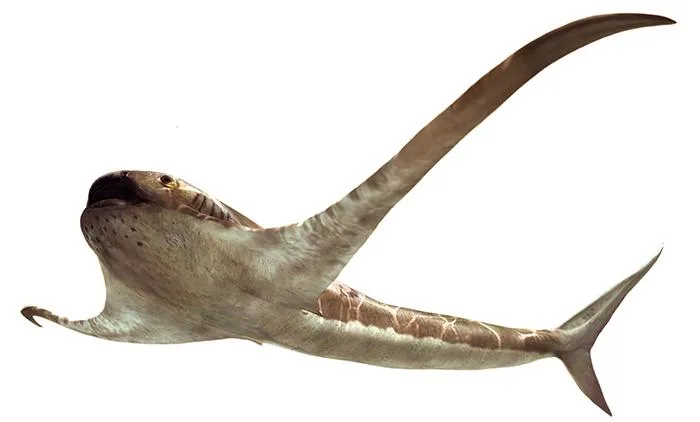
Behold: the ancient 'eagle' shark
Scientists have recently discovered a new Cretaceous species, providing new insight into shark evolution.
Some 93 million years ago, 'winged' sharks inhabited the waters of the Gulf of Mexico. Scientists first discovered a complete specimen in Vallecillo, Mexico in 2012, publishing a paper describing the species in March 2021.
Aquilolamna milarcae had long pectoral fins that look like wings, not unlike manta rays. But they also share characteristics with whale and tiger sharks, including a well-developed superior lobe.
"Thus, its anatomical features thus give it a chimeric appearance that combines both sharks and rays," the authors of the study said in a statement.

Artist's impression of an eagle shark. Courtesy: Oscar Sanisidro.
It had a large mouth and small teeth, leading experts to believe it fed on plankton. The specimen recovered is 1.65 metres long with a span of 1.90 metres.
Before the discovery, scientists only knew of one category of large plankton feeders that lived during the Cretaceous peirod, a bony fish called pachycormidae. Now there are at least two known large, Cretaceous plankton feeders.
"As well as shedding light on the structure of Cretaceous marine ecosystems, the discovery of eagle sharks reveals a new, hitherto unsuspected, facet of sharks' evolutionary history," the authors say.
